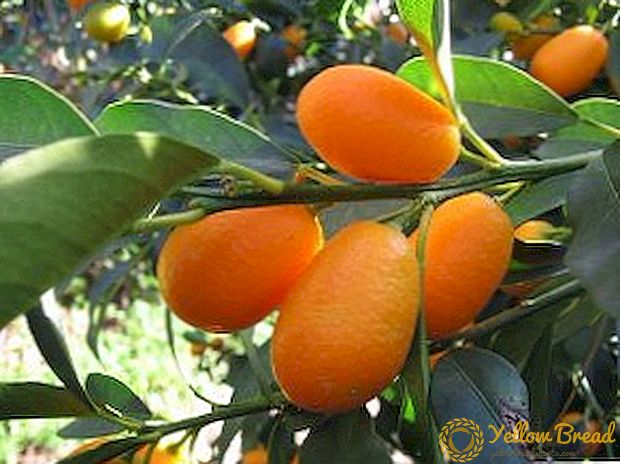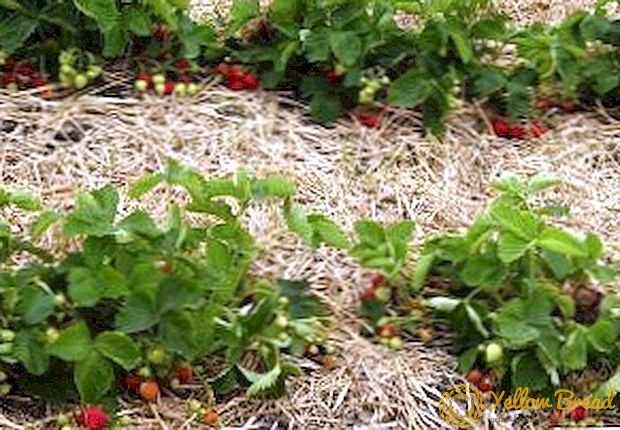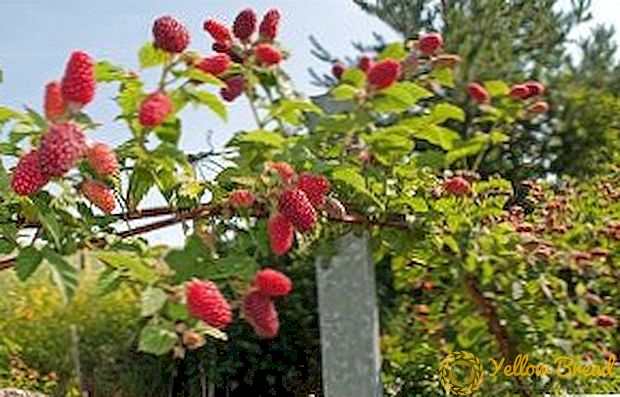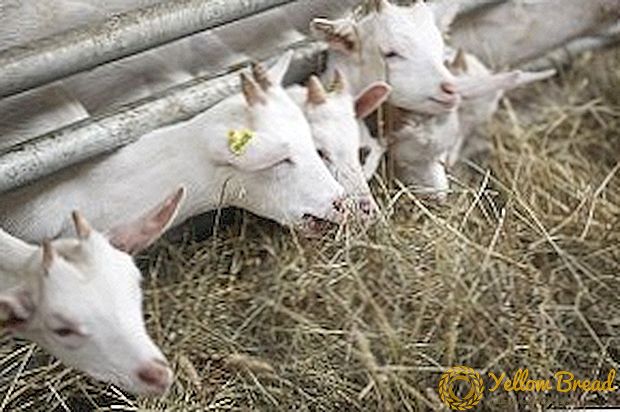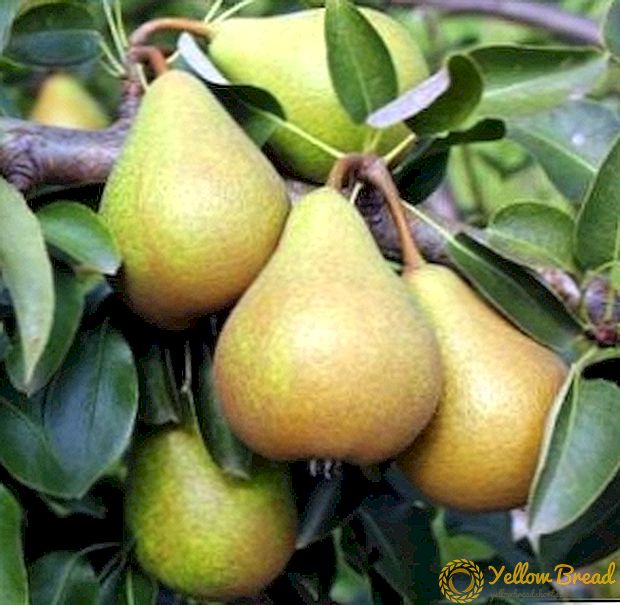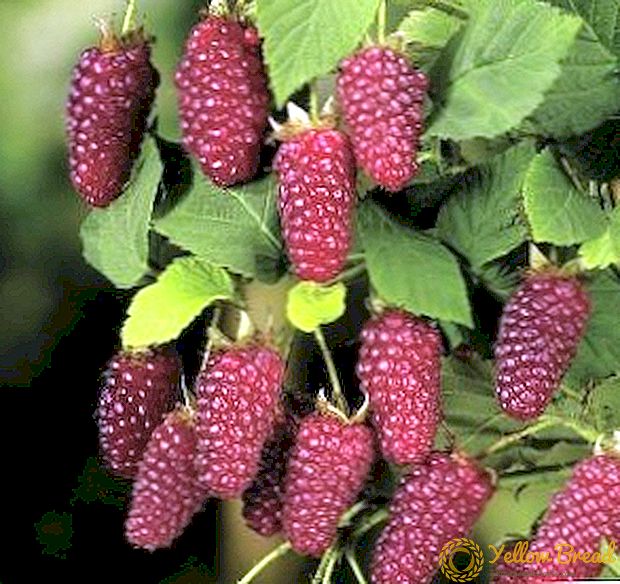 Chaenomeles, or Japanese quince, is grown as an ornamental and useful fruit-bearing culture. During flowering, this extraordinarily beautiful plant is an ornament to any garden, and from its fruits are obtained delicious desserts: jams and preserves. Chaenomeles is indispensable as a hedge around a plot, its extensive forked root system holds loose soil.
Chaenomeles, or Japanese quince, is grown as an ornamental and useful fruit-bearing culture. During flowering, this extraordinarily beautiful plant is an ornament to any garden, and from its fruits are obtained delicious desserts: jams and preserves. Chaenomeles is indispensable as a hedge around a plot, its extensive forked root system holds loose soil.
- Planting chaenomeles
- Location selection
- Preparing the soil for planting
- Japanese quince care
- Watering and feeding henomeles
- Pruning quince
- Preparing shrubs for winter
- Reproduction of henomeles in different ways
- Seeds
- Cuttings
- With vaccination
- Root offspring
- Harvesting and Storage
- Useful properties of Japanese quince
Planting chaenomeles
The best period for planting a Japanese quince is spring, when the earth has already thawed, and the buds have not yet blossomed. The two-year-old plant, planted from a container with closed roots, is well established. It is not advisable to plant a quince in the fall, she loves warmth and can die before she really takes root. The plant also does not like frequent transplants, so it is better to immediately find a permanent place for it.
Location selection
Japanese heat-giving quince prefers sunlit places, closed from the wind. It is better to choose for her a corner on the south side, well lit by the sun, because in the shade the plant blooms poorly and develops poorly.

Preparing the soil for planting
Growing a Japanese quince is easy, it grows well on almost any soil, except for peaty soils. The main requirement for the composition of the soil - the absence of salinity and lime inclusions. Best of all henomeles develops on the ground, which has good drainage, fertilizer and moderate humidity. Beware of planting the plant on alkaline soil - chlorosis leaves appear. The plant is resistant to dry periods, although at an early age, after planting, it needs to be moisturized, but without stagnant moisture. Before planting a Japanese quince, you need to clear the soil of weeds, poor and heavy soil must be “diluted” with leafy soil and sand, fertilized with peat-dung composition, and also with phosphorus additives.
Japanese quince care
Caring for it is not time consuming, it consists in weeding, loosening of pristvolny circles (only in spring and autumn), the formation of the crown and dressing.
Watering and feeding henomeles
Chaenomeles does not require frequent watering, the exception is a long dry period. Before autumn night frosts need to moisten the soil under young plants, the last watering is done depending on weather conditions in late October - early November. After harvesting leaves with a jet of a hose, you can wash off the dust.
 In the summer, under the bushes, plants loosen the soil, weed around, weed, sprinkle mulch. The best period for mulching is late spring. The soil is well moistened with melted snow, but already warmed up sufficiently. For mulch, you can use sawdust or chopped bark of trees, you need to fill, focusing on the diameter of the crown of the plant. In the first year after planting, it is advisable not to feed with liquid formulations so as not to burn the developing roots, moreover, the soil has already been fertilized when planted. In subsequent years, immediately after the snow has melted, mineral and organic supplements are applied. In the summer they use liquid fertilizers, for example, solutions from bird droppings or ammonium nitrate.
In the summer, under the bushes, plants loosen the soil, weed around, weed, sprinkle mulch. The best period for mulching is late spring. The soil is well moistened with melted snow, but already warmed up sufficiently. For mulch, you can use sawdust or chopped bark of trees, you need to fill, focusing on the diameter of the crown of the plant. In the first year after planting, it is advisable not to feed with liquid formulations so as not to burn the developing roots, moreover, the soil has already been fertilized when planted. In subsequent years, immediately after the snow has melted, mineral and organic supplements are applied. In the summer they use liquid fertilizers, for example, solutions from bird droppings or ammonium nitrate.
Pruning quince
Quince trimming procedure transfers easily. Most varieties of henomeles have fairly sharp spines, therefore, if you are going to prune the plant, protect your hands with gloves of good density.
Pruning a quince in the spring is a sanitary procedure: dry and damaged branches should be cut with a pruner or a small saw. The plant is quickly restored, especially if you lubricate the cut-off area with pre-cooked pitch.
 The formation of the crown of the bush begins at 4-5 years of age, only in early spring. The same is done with the root system: so that the plant does not grow too widely, part of the rhizome is removed. Shoots that grow at the bottom or go far up are also cut. Rejuvenate quince pruning on reaching 10 years of age. The plant is thinned by cutting thin and weak shoots, deformed and elongated without measure. Try to keep the branches that bear fruit when pruning.
The formation of the crown of the bush begins at 4-5 years of age, only in early spring. The same is done with the root system: so that the plant does not grow too widely, part of the rhizome is removed. Shoots that grow at the bottom or go far up are also cut. Rejuvenate quince pruning on reaching 10 years of age. The plant is thinned by cutting thin and weak shoots, deformed and elongated without measure. Try to keep the branches that bear fruit when pruning.
By the autumn period, the tillering stops, all the juices and plant development efforts are directed at the fruits. To prepare a quince for the winter period, you need to know when and how to cut a quince in the fall. There is no difficulty, pruning is carried out after the full harvest of the henomeles fruits, it is impossible to leave them on the tree.
Preparing shrubs for winter
The older the quince tree, the more resistant it is. Young plants of the Japanese quince require more care and protection, especially in the winter. The soil under young bushes must be well mulched, covered with spruce leaves so that the roots are not frozen. Do not worry if by spring you find frozen branches, they just need to be removed. If you have a tall species of henomeles, bend the flexible branches of the plant to the ground - this will be an additional protection for its roots. An adult well-grown plant, covered with snow, suffers even cold. Chaenomeles bark is a dessert for hares, so think over how to cover the quince stem from rodents.
Reproduction of henomeles in different ways
 The simplicity of henomeles applies to its reproduction. You do not need to have special knowledge and suffer the question: how to propagate the henomeles, when the plant reproduces well and without human help. For example, a branch sprinkled with earth by a gust of wind will take root and grow, and after a bush is transplanted to a new place, shoots will appear on the old one for a while. The plant multiplies in many ways, consider each.
The simplicity of henomeles applies to its reproduction. You do not need to have special knowledge and suffer the question: how to propagate the henomeles, when the plant reproduces well and without human help. For example, a branch sprinkled with earth by a gust of wind will take root and grow, and after a bush is transplanted to a new place, shoots will appear on the old one for a while. The plant multiplies in many ways, consider each.
Seeds
The easiest way of reproduction is planting quince seeds in the fall. After collecting the fruits, during harvesting as supplies, quince seeds are harvested, dried and planted in the soil. They give good strong shoots. If you do not have time before winter, lay the seeds on the stratification, and plant in the spring.
In the spring, the grown seedlings are transplanted to a permanently prepared place, transplanting quince in the fall is not desirable.
Cuttings
In the warm days of June, in the early morning green quince cuttings are cut. Perfectly rooted cuttings that have about a centimeter of the old branch. They are planted in mixed soil of sand and peat (mixture: 3 x 1). Between the cuttings make the distance so that they do not interfere with the development of each other, and stimulate the growth of top dressing "Kornevin". In warm weather, rooting will occur in 40 days. Chaenomeles is well accustomed, the yield of rooted seedlings will be about 50%. 
With vaccination
Quince vaccination is carried out in May. Varietal grafts for vaccination with an eye are harvested in advance (at the end of July - beginning of August), a kidney with part of the cortex is cut in the middle part of the germ.Then, on the stock, make an incision in the shape of the letter “T”, bending the edges of the incision, and implant a peephole-kidney. The site of the scion is squeezed, wrapped and smeared with garden pitch. The following year in the spring, when the scion gives way to escape, the bandage is removed. On low-growing plants you can "plant" a few eyes. It is advisable to place grafts closer to the ground to protect against winter frosts. To improve the culture, take stock of pears, hawthorn and rowan. In winter, grafted plants need to be covered with spruce leaves, you can build wooden shields from the wind and to hold the snow.
Root offspring
The root system of henomeles develops rather quickly and spreads over a large area. This allows the plant to propagate root suckers. For this purpose, well-developed processes of about 15 cm long are taken from the rhizomes. The shoots are planted vertically, watered, observing the moderate humidity of the soil. It is necessary to mulch around the sprout with humus or wood chips. This is not the best way to breed quinces, because at first the plant does not bear fruit well.
Harvesting and Storage
At the end of September, and in some regions in October, there comes a period when you can collect a quince. If you carefully and timely cared for the plant, you can collect up to 3 kg of fruit from one tree.

Useful properties of Japanese quince
Japanese quince more than 5% consists of organic acids, contains about 2% tannins. The fruits of chhenomeles have an amount of vitamin C more than that of lemon, it is preserved during heat treatment.Therefore, products from quince fruits are used as a means to prevent seasonal viral diseases. Quince contains vitamins: B1, B2 and P; pectins and trace elements: phosphorus, potassium and calcium.
 The pectins contained in the fruit, promote the removal of heavy metals and toxins from the blood, which is very useful in poor ecology. Fresh quince juice has a beneficial effect in case of atherosclerosis, anemia and hypertensive problems. Chaenomeles lowers cholesterol in the blood, strengthens the walls of blood vessels.
The pectins contained in the fruit, promote the removal of heavy metals and toxins from the blood, which is very useful in poor ecology. Fresh quince juice has a beneficial effect in case of atherosclerosis, anemia and hypertensive problems. Chaenomeles lowers cholesterol in the blood, strengthens the walls of blood vessels.
A decoction of quince seeds reduces inflammation of the mucous membranes of the eyes, stops bleeding; lotions treat burns and irritations on the skin.
A flowering plant with its colorful appearance in itself raises the spirits, and the products of fruit processing will increase the tone of your body.

